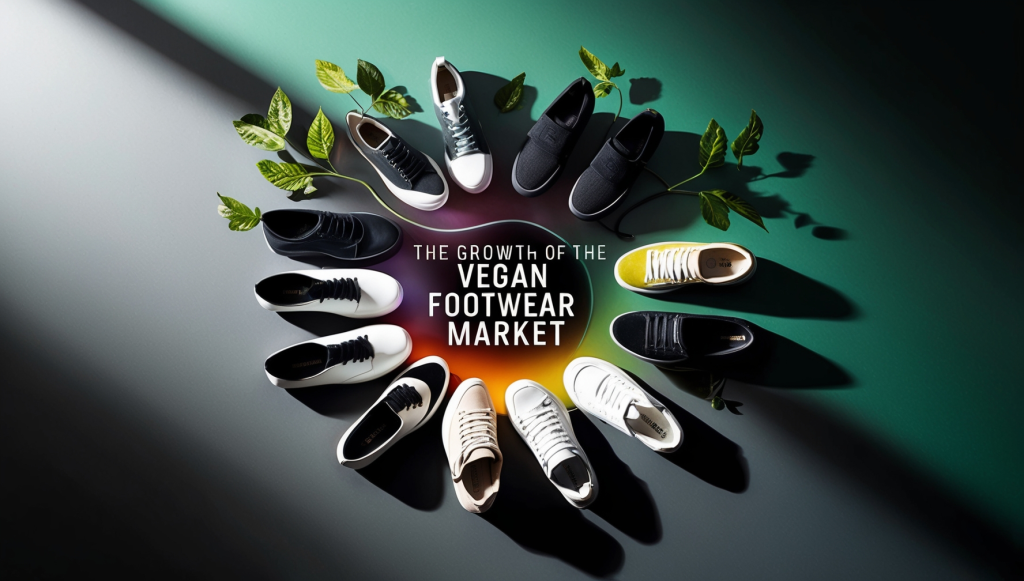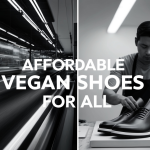
Urbanization is reshaping consumer behavior and preferences, particularly in the realm of sustainable fashion. As more people migrate to urban areas, their purchasing habits evolve, leading to increased demand for eco-friendly and ethically produced products. This article explores how urbanization influences the demand for sustainable fashion, with a specific focus on vegan footwear, demographic trends, income levels, and the availability of options in urban versus rural areas.
The Impact of Urbanization on Sustainable Fashion Demand
- Increasing Urban Population: By 2025, it is projected that over 60% of the world’s population will reside in cities. This shift towards urban living is significant, as urban areas tend to foster greater awareness of social and environmental issues. Consumers in cities are often more exposed to trends in sustainability and ethical consumption, making them more likely to seek out vegan footwear and other sustainable fashion options .
- Changing Consumer Preferences: Urbanization leads to changes in lifestyle and social dynamics. Consumers living in urban environments often prioritize convenience, style, and sustainability. As they become more sophisticated in their purchasing decisions, they increasingly favor brands that align with their values, including those that offer vegan footwear made from eco-friendly materials .
- Access to Information: Urban populations typically have better access to information about sustainable practices and ethical brands through social media and online platforms. This exposure enhances consumer awareness regarding animal welfare and environmental sustainability, driving demand for vegan products .
Demographic Trends Driving the Vegan Footwear Market
- Millennials and Gen Z: Younger generations are at the forefront of the vegan movement. According to recent studies, approximately 70% of Millennials express interest in sustainable fashion choices. This demographic is more likely to adopt veganism and seek out cruelty-free products, including footwear .
- Rising Vegan Population: The global vegan population is steadily increasing, with estimates suggesting that around 8% of U.S. adults identify as vegan, a significant rise from previous years. This growing demographic drives demand for vegan footwear as consumers look for products that reflect their lifestyle choices .
- Cultural Shifts: Urban areas tend to be more cosmopolitan and less conservative than rural regions, leading to a shift away from traditional clothing towards modern styles that include sustainable options. This cultural evolution supports the acceptance and popularity of vegan footwear among urban consumers .
Income Levels and Adoption of Vegan Footwear
Income levels play a crucial role in the adoption of vegan footwear:
- Higher Disposable Income: Urban populations often have higher disposable incomes compared to rural residents, enabling them to invest in sustainable fashion products. Consumers with greater financial resources are more likely to prioritize quality over price when it comes to purchasing vegan shoes .
- Price Sensitivity: While many consumers are willing to pay a premium for sustainable products, price sensitivity remains a barrier for some. Brands need to balance quality with affordability to attract a broader audience within urban settings.
Availability of Vegan Footwear Options: Urban vs. Rural Areas
The availability of vegan footwear options significantly differs between urban and rural areas:
- Retail Access: Urban areas typically offer a wider variety of retail outlets that stock vegan footwear, including specialty stores and online platforms. In contrast, rural areas may have limited access to such products, making it harder for consumers to find sustainable options .
- E-commerce Growth: The rise of e-commerce has improved access to vegan footwear across geographic boundaries; however, urban consumers still benefit from faster shipping times and local availability compared to their rural counterparts.
- Brand Presence: Many leading vegan footwear brands focus their marketing efforts on urban markets where demand is higher. As a result, consumers in cities are more likely to encounter these brands through advertising campaigns and influencer promotions.
The Growth of the Vegan Footwear Market: Key Factors and Trends

The vegan footwear market is experiencing robust growth, driven by a combination of ethical considerations, technological advancements, and changing consumer preferences. This article examines the key factors influencing this growth, the demand for sustainable fashion in urban versus rural areas, challenges faced by vegan footwear brands in emerging markets, the impact of technological advancements on sustainability, and the role of government initiatives in promoting eco-friendly footwear.
Key Factors Driving the Growth of the Vegan Footwear Market
- Rising Ethical Concerns: Increasing awareness regarding animal welfare is a significant driver behind the growth of the vegan footwear market. According to recent statistics, approximately 8% of U.S. adults identify as vegan, reflecting a broader trend towards cruelty-free living. This shift in consumer values is leading to a greater demand for products that align with ethical standards, including vegan footwear.
- Environmental Awareness: Growing concerns about environmental sustainability are prompting consumers to seek eco-friendly alternatives. The global vegan footwear market was valued at $157.9 billion in 2020 and is projected to reach $300.2 billion by 2030, with a compound annual growth rate (CAGR) of 6.8% during this period. This growth is fueled by an increasing inclination towards sustainable products that minimize ecological impact.
- Urbanization and Demographic Shifts: The rapid urbanization, especially in developing regions like Asia and Africa, presents a significant opportunity for the vegan footwear market. As urban populations grow, particularly among younger demographics who are more health-conscious and environmentally aware, the demand for vegan options is expected to rise. By 2030, there will be an estimated 1.3 billion individuals aged 15-24 globally, many of whom are inclined to make ethical purchasing decisions.
- Technological Advancements: Innovations in materials science have led to the development of high-quality synthetic and plant-based materials that can effectively replace traditional leather. These advancements enhance the performance and aesthetic appeal of vegan footwear, making it more attractive to consumers.
Demand for Sustainable Fashion: Urban vs. Rural Areas
The demand for sustainable fashion varies significantly between urban and rural areas:
- Urban Areas: Urban consumers tend to have higher awareness levels regarding sustainability and ethical fashion due to greater access to information and exposure to trends through social media. E-commerce platforms also facilitate easy access to a variety of vegan footwear options, making it easier for urban dwellers to make sustainable choices.
- Rural Areas: In contrast, rural consumers may have limited access to vegan footwear options and less exposure to sustainable fashion trends. Price sensitivity can also be more pronounced in rural areas where disposable incomes might be lower compared to urban settings. As a result, while there is interest in sustainable products, adoption rates may lag behind those in urban environments.
Challenges Faced by Vegan Footwear Brands in Emerging Markets
Vegan footwear brands encounter several challenges in emerging markets:
- High Production Costs: The cost of producing vegan footwear is often higher than that of traditional leather shoes due to the use of alternative materials and ethical manufacturing practices. This price difference can deter price-sensitive consumers from making the switch.
- Limited Awareness: Many consumers in emerging markets may lack awareness about the benefits of vegan footwear or may not fully understand what constitutes vegan products. This knowledge gap can hinder market penetration.
- Counterfeit Products: The prevalence of counterfeit products can undermine brand trust and consumer confidence in legitimate vegan footwear brands, particularly in regions where price sensitivity is high.
Technological Advancements Influencing Sustainability
Technological innovations play a crucial role in enhancing the sustainability of footwear:
- Material Innovation: Advances in material science have led to the development of alternatives such as microfiber, recycled plastics, and plant-based leathers that offer comparable performance to traditional materials while reducing environmental impact.
- Production Techniques: Improved manufacturing processes can reduce waste and energy consumption during production, further enhancing the sustainability profile of vegan footwear brands.
Role of Government Initiatives
Government initiatives can significantly influence the promotion of eco-friendly footwear:
- Regulatory Support: Governments can implement regulations that encourage sustainable practices within the fashion industry, such as incentives for using recycled materials or penalties for environmentally harmful practices.
- Awareness Campaigns: Public campaigns aimed at educating consumers about sustainable fashion choices can help increase awareness and drive demand for eco-friendly products, including vegan footwear.
- Funding for Innovation: Government funding for research and development can support innovations in sustainable materials and production techniques, fostering growth within the vegan footwear market.
The Vegan Footwear Market: Key Influences and Trends
The vegan footwear market is rapidly expanding, driven by a combination of ethical considerations, technological advancements, and changing consumer preferences. This article explores how high production costs impact market penetration, the popularity of vegan footwear among millennials, the influence of e-commerce platforms, emerging technologies in plant-based fabrics, and the role of government regulations in North America.
How High Production Costs Affect Market Penetration
High production costs pose a significant challenge for vegan footwear brands, affecting their ability to penetrate the market effectively. Several factors contribute to this issue:
- Material Costs: Vegan materials such as plant-based leathers and recycled textiles often come at a premium compared to traditional materials. For instance, while the global vegan footwear market was valued at $40.56 billion in 2023 and is projected to reach $67.73 billion by 2030, the higher costs associated with sustainable materials can limit accessibility for price-sensitive consumers.
- Price Sensitivity: Many consumers may be hesitant to pay higher prices for vegan footwear, especially when cheaper alternatives are available. This price sensitivity can hinder widespread adoption among demographics that prioritize affordability over ethical considerations.
- Brand Competition: With numerous brands entering the vegan footwear space, competition is fierce. Brands that cannot manage production costs effectively may struggle to maintain competitive pricing, limiting their market share.
Popular Types of Vegan Footwear Among Millennials
Millennials are a key demographic driving the demand for vegan footwear. Popular types among this group include:
- Sneakers: Casual and versatile, vegan sneakers made from materials like recycled plastics and plant-based leathers are particularly favored by millennials seeking both style and comfort.
- Sandals: Eco-friendly sandals made from sustainable materials are popular during warmer months, with brands like Teva and Birkenstock offering vegan options that appeal to this demographic.
- Boots: Stylish yet functional vegan boots are gaining traction among millennials who appreciate both aesthetics and practicality in their footwear choices.
Influence of E-Commerce Platforms on the Vegan Footwear Market
E-commerce platforms have transformed how consumers shop for vegan footwear:
- Accessibility: Online shopping allows consumers in both urban and rural areas to access a wider variety of vegan footwear options than what may be available locally. This increased accessibility supports market growth by allowing brands to reach a broader audience.
- Consumer Awareness: E-commerce platforms often feature detailed product descriptions and customer reviews, helping educate consumers about the benefits of vegan footwear. This transparency can enhance trust and encourage purchases.
- Promotions and Discounts: Online retailers frequently offer promotions that make vegan footwear more affordable, helping mitigate some of the price sensitivity associated with high production costs.
Emerging Technologies in Plant-Based Fabrics for Vegan Footwear
Innovations in material science are crucial for advancing the vegan footwear market:
- Plant-Based Leathers: Companies like Allbirds and Nike are developing plant-based leathers made from materials such as pineapple leaves (Piñatex) and apple peels, which provide sustainable alternatives to traditional leather.
- Recycled Materials: Brands are increasingly using recycled plastics and textiles to create fashionable and durable shoes. For instance, Rothy’s utilizes recycled plastic water bottles to produce stylish flats.
- Bio-Based Materials: Emerging technologies focus on creating bio-based materials that mimic the properties of leather while being environmentally friendly. Innovations such as dandelion rubber used by Cole Haan demonstrate the potential for sustainable alternatives in footwear manufacturing.
Role of Government Regulations in North America
Government initiatives play a crucial role in promoting eco-friendly footwear:
- Regulatory Support: In North America, regulations aimed at reducing environmental impact can incentivize companies to adopt sustainable practices. For example, some states have implemented stricter regulations on waste management that encourage brands to use recyclable materials.
- Funding for Sustainable Practices: Government grants and funding opportunities for research into sustainable materials can support innovation within the vegan footwear industry, helping brands develop cost-effective solutions.
- Consumer Education Campaigns: Government-led initiatives that promote awareness about sustainable fashion can help inform consumers about the benefits of choosing eco-friendly products like vegan footwear.
The growth of the vegan footwear market is driven by a confluence of factors including rising ethical concerns, environmental awareness, demographic shifts towards urbanization, technological advancements, and supportive government initiatives. While challenges remain, particularly in emerging markets, there is significant potential for expansion as consumer preferences continue to evolve towards sustainability.
Brands that effectively navigate these dynamics by leveraging technology and addressing consumer education will be well-positioned to thrive in this rapidly growing segment of the fashion industry.
Urbanization significantly influences the demand for sustainable fashion by reshaping consumer preferences toward ethical choices like vegan footwear. With rising awareness among younger generations, increasing disposable income in urban areas, and greater access to information and retail options, the market for sustainable products continues to grow.
As urban populations expand and evolve, brands must adapt their strategies to meet the demands of these conscious consumers by offering stylish, affordable, and accessible vegan footwear options. By understanding the dynamics at play in urban settings, stakeholders can better position themselves within this rapidly evolving market landscape.







